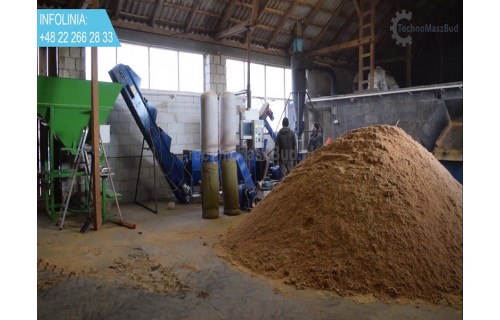Production of pellets from sawdust | what are pellets and what are their advantages

Pellet production has become quite popular recently. This alternative type of fuel gives a lot of heat and allows you to save significantly because it is cheaper than coal or firewood. It turns out that you can reduce your heating costs even further by producing your own pellets. It's not difficult, but you will need special equipment - let's talk about everything in this article.
What are pellets and what are their advantages
Pellet is a compressed granulate made of crushed raw materials. The raw materials may be straw, sawdust, sunflower husk, rice or buckwheat, etc. All of these components provide different thermal performance, but are quite inexpensive because they are actually waste from the woodworking or agricultural industry.
The advantages of pellets over other types of fuel are obvious:
- Pellet is a completely eco-product because it consists of only one ingredient - natural sawdust;
- Low percentage of ash content allows the boilers to be operated infrequently, heating is almost completely automated;
- Pellets are convenient to store and easy to transport;
- The cost of the material is much lower than the price of coal or firewood;
- You can make pellets from sawdust at home, thus saving even more money;

Two things are needed to produce pellets: raw materials (sawdust, husk or straw, etc.) and equipment.
The moisture content of sawdust plays an important role in pellet production. The moisture content of the material should be 12%. Wetter sawdust must be pre-dried (straw and husk are usually well dried), and over-dried raw materials must be moistened, otherwise granules will not form.
Coarse sawdust, shavings and wood chips should be crushed to the appropriate fraction.
Based on these requirements, you can easily determine the number of pellet production machines:
- Chopper / Beater Mill
- Feeder for smooth feeding of raw materials
- Humidification system
- A conveyor belt with fans that cools the pellets

The final stage
During the pressing process, the temperature of the sawdust increases to 70-90 degrees, in this form the granules are very brittle and destructive. Therefore, the pellets must be cooled immediately after leaving the granulator. For this purpose, a conveyor belt with fans is used which cools the pellets with cool air. After cooling, the granules harden and are no longer so easy to break.

